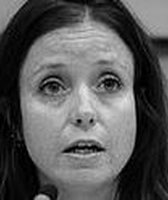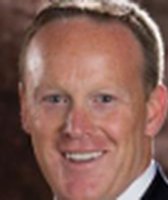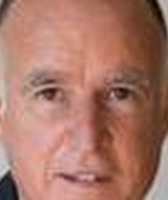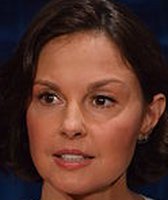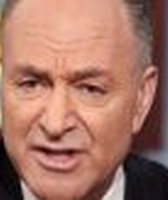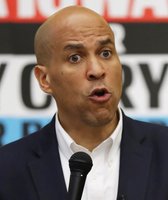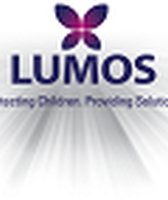Stand up for the facts!
Our only agenda is to publish the truth so you can be an informed participant in democracy.
We need your help.
I would like to contribute
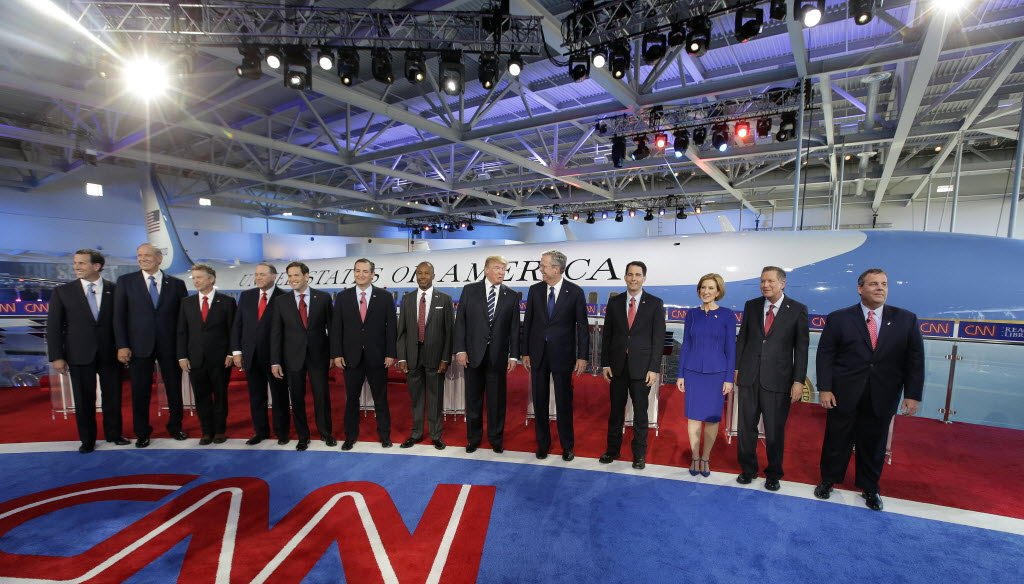
Wisconsin Gov. Scott Walker (fourth from right) was among the Republican presidential candidates who participated in the second Republican presidential debate on Sept. 16, 2015. (AP photo)
Ronald Reagan is undoubtedly a conservative icon, so much so that he was mentioned 14 times during the first GOP debate. With tonight's debate at the Ronald Reagan library in Simi Valley, Ca., we expect his name to be invoked even more.
Click here for live coverage of the GOP debate.
But besides naming him as one of the greatest (if not the greatest) American president or as a personal hero, just how much do politicians and pundits know about Reagan? And how does Reagan’s legacy align with the pressing topics of this election season? We dug into our archives and found that people don't always get their facts right when it comes to the 40th president.
Immigration
On immigration, arguably the centerpiece issue among the GOP field, Reagan’s stance is often ignored or mischaracterized. In his famed 1989 farewell address, he spoke of his vision of America as a "shining city upon a hill … and if there had to be city walls, the walls had doors and the doors were open to anyone with the will and the heart to get here."
Three years earlier, Reagan signed the 1986 amnesty act that gave legal status to many illegal immigrants. Some have said that immigrants "were not pouring in" under Reagan like they are now, but that is not accurate. We rated the claim False.
The size of the undocumented population rose 200,000 per year under Reagan, compared with 120,000 per year under Obama. If we look at apprehension figures, there were about a million attempts by people to cross the border during the Reagan years. It’s less than half of that amount under Obama.
Abortion
During his first successful bid for the White House in 1980, Reagan ran on a strict anti-abortion platform. But was the Gipper always pro-life?
As governor of California in 1967, Reagan signed a bill legalizing abortions where the pregnancy could endanger the mother’s life or mental state or was the result of incest or rape. But he did so after much hesitation.
Our 2007 fact-check dug into the issue: "Reagan did not know what to do," his biographer writes in Ronald Reagan: The Presidential Portfolio. "His staff was divided (also largely on religious lines), and he was lobbied heavily from both sides. … After several days of indecision, Reagan reluctantly signed the Therapeutic Abortion Act. After he recognized its consequences, he became an opponent of abortions, except to save the life of the mother or in cases of rape or incest."
The economy
Growing economic prosperity during the Reagan years is one of the reasons why he’s revered. But when waxing political on the golden era of the Gipper, pundits and politicians have flubbed their points.
Conservative columnist George Will earned a Pants on Fire for his claim that "Reagan had a month of job creation of 1 million."
Here’s the story: In August 1983, about 675,000 telephone workers went on strike and returned to work in September, causing a dip and then spike in the employment numbers. The Bureau of Labor Statistics and news reports discounted this as a statistical anomaly.
Others have claimed that Reagan’s tax cuts are what spurred the economy. "What we need to do is what Ronald Reagan did in 1981, and cut taxes and enjoy exponential growth," said a Rhode Island congressional candidate said.
Reagan did cut taxes in 1981, but he also approved dramatic tax hikes in the following years. Economists and pundits disagree over the impact of these tax changes and cycles of economic growth. PolitiFact Rhode Island rated the claim Mostly False.
Public perception of government
Known as the "great communicator," Reagan undoubtedly won over many Americans. But a claim that his ability to inspire trust is unparalleled goes too far.
"The last time there was a sustained surge of confidence in government's competence was under Ronald Reagan," said George Will.
While public trust in government rose and held steady under Reagan, it also grew during Bill Clinton’s presidency. We rated Will’s claim False.
Many also use Reagan to disparage Obama. For example, a Fox News pundit criticized Obama for sticking with his regular schedule when Malaysian Airlines Flight 17 crashed in 2014. Reagan, conversely, "rushed home from Santa Barbara vacation" when Korean Air Flight 007 was shot down by the Soviet air force in 1983, according to the pundit.
That’s Mostly False. Following the attack, a Reagan spokesperson told reporters that the president would not return to Washington. But eight hours later, he announced that Reagan would return the next day. In short, the delay was not long but there was more deliberation than the claim suggested.
Taxes and debt
While Reaganomics champion lowering taxes, Reagan wasn’t always a stickler. He actually raised taxes -- a lot: "A billion dollars in his first year as governor of California."
That claim rates True. Though he did so reluctantly, Reagan increased taxes in California by 18 percent in 1967, roughly $1 billion or $7.1 billion today.
As president, Reagan also raised the debt ceiling 18 times between February 1981 and September 1987.
What’s more, Reagan "understood repeatedly that when the deficit started to get out of control, that for him to make a deal he would have to propose both spending cuts and tax increases," said Obama.
While Reagan didn’t typically propose tax increases himself, he did approve and advocate for them in budget deals. We rated the claim Mostly True.
Reagan the candidate
Beyond adulation, Reagan has also been a source of inspiration for struggling candidates. Reagan used debates, for example, to pull himself ahead, New Jersey Gov. Chris Christie suggested in 2012.
"(Reagan) was behind in the polls in 1980 going into the debate with Jimmy Carter and then turned around 10 days later and won 40 states," Christie said at a time when Mitt Romney was trailing Obama. "These debates matter."
This claim rated Half True. Reagan won 44 states that year, but he wasn’t behind Carter in all the polls. Overall, the two were in a "virtual dead heat" before the election.
And it's True, Reagan was also once a Democrat, who switched to the Grand Ole Party in 1962. "I didn’t leave the Democratic Party. The party left me," he said.
Another comparison between Reagan and Obama illustrates the evolution of campaign finance over the past 30 years. Lawrence Lessig, a Harvard professor and Democratic presidential candidate, tallied up the number of fundraisers attended by both presidents in their re-election campaigns: eight for Reagan in 1984 versus 228 for Obama in 2012.
Those numbers are consistent with other estimates from reports and experts, and there’s little doubt about Lessig’s larger point. We rated the claim Mostly True.
Our Sources
PBS, Reagan's Farewell Speech, 1989
Washington Post, Transcript: GOP Aug. 6 undercard debate, Aug. 6, 2015
Time, Transcript: Read the Full Text of the Primetime Republican Debate, Aug. 6, 2015


